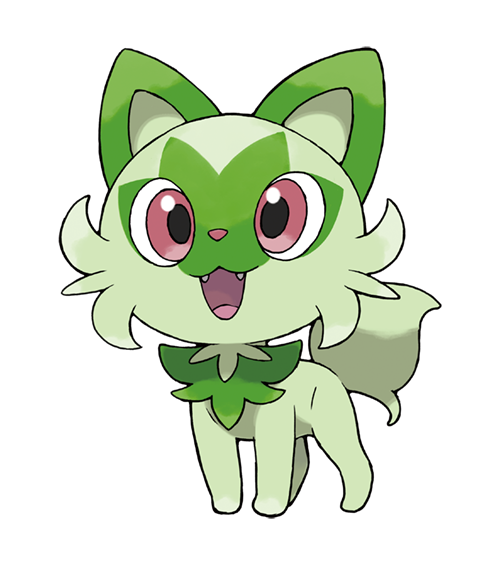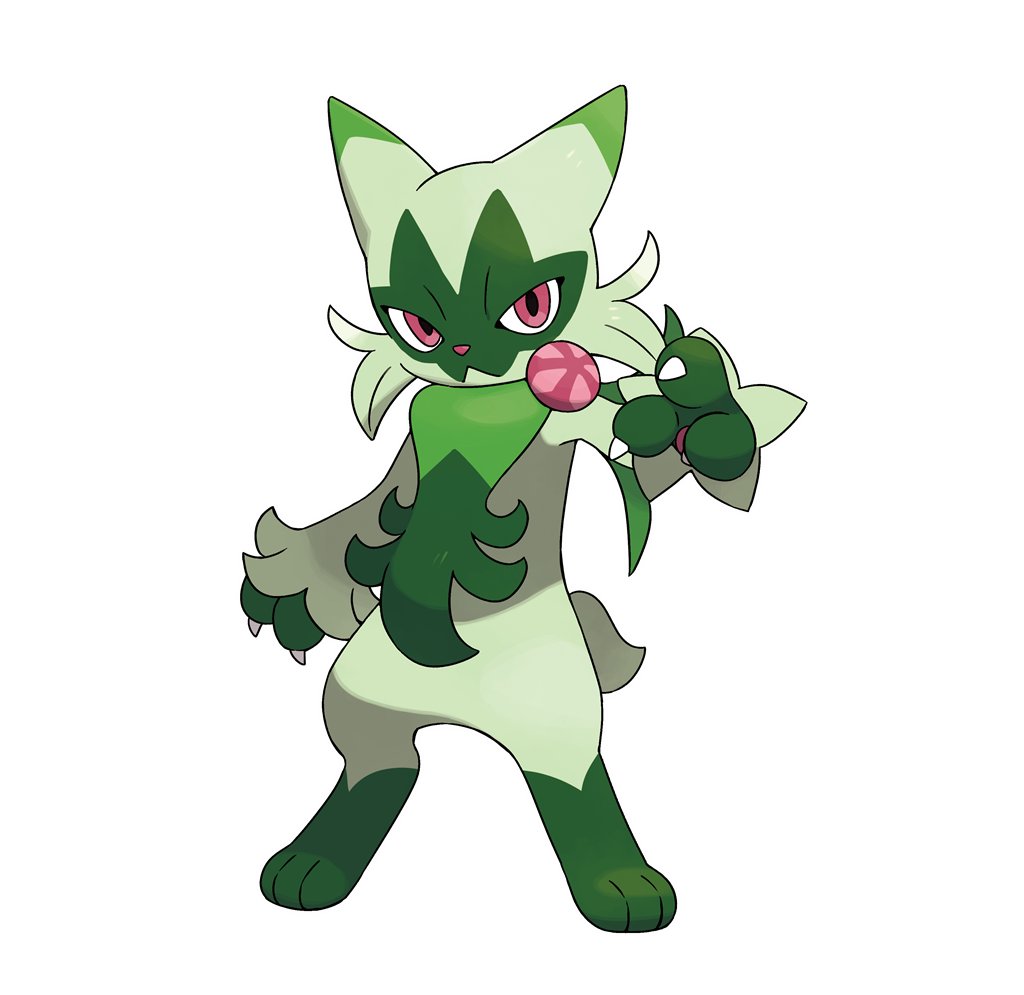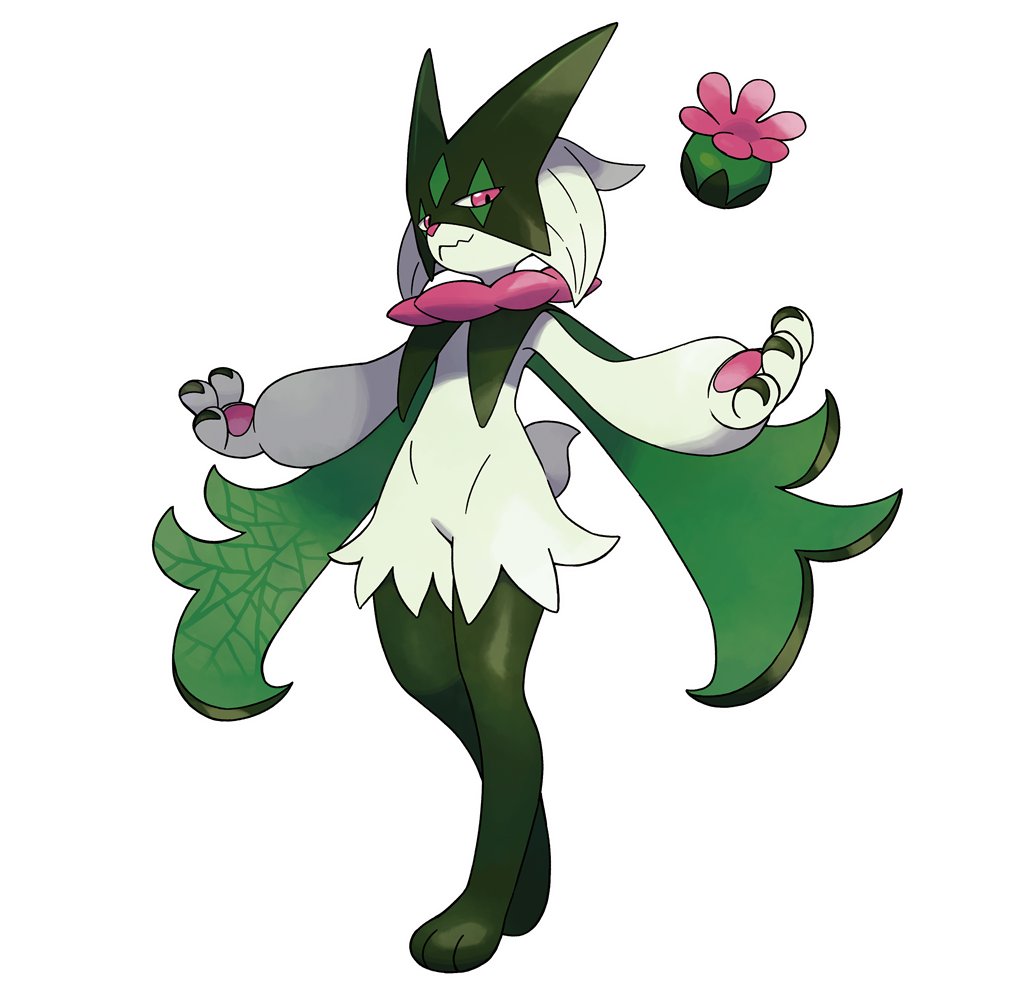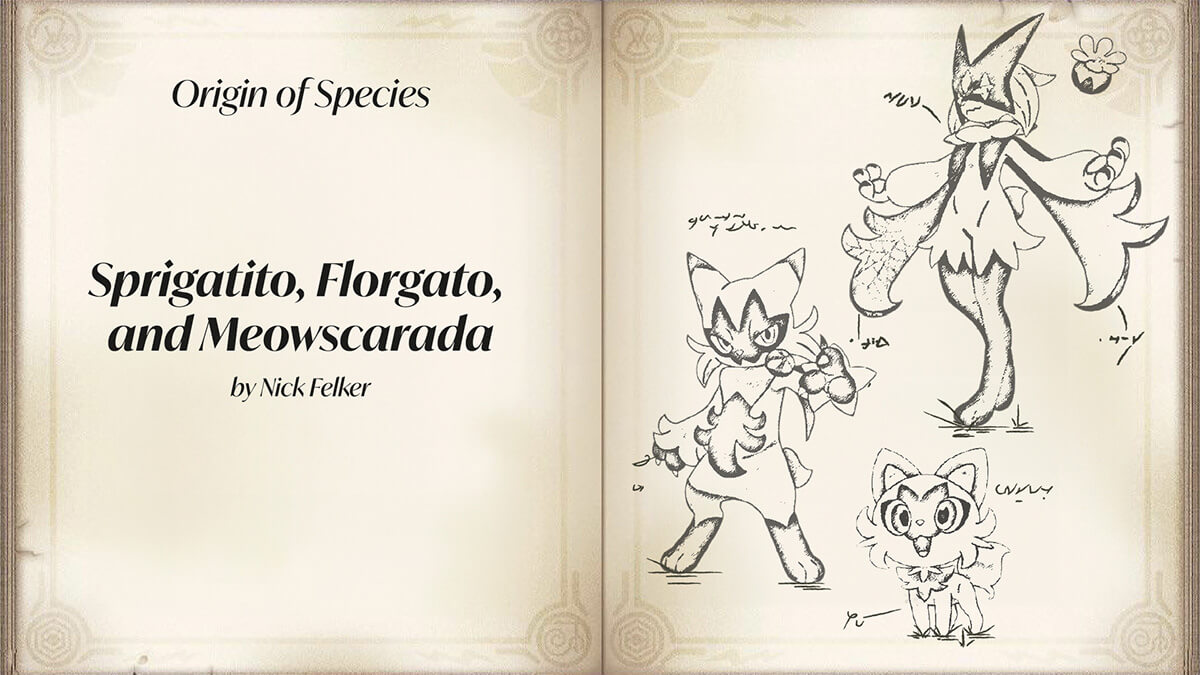In this recurring series, I’ll analyze the origins of Pokémon designs and their allusions to Mediterranean culture from Pokémon Scarlet and Pokémon Violet.
Sprigatito

Sprigatito is one of the first partner Pokémon you may choose at the start of your journey in Paldea. Its classification as the “Grass Cat” is a perfect description, with a green color and a leaf imprint across its face. Its name reflects this as well, a combination of “sprig” and “gatito”, the Spanish word for kitten.
Its fluffy fur is similar in composition to plants. This Pokémon frequently washes its face to keep it from drying out.
The sweet scent its body gives off mesmerizes those around it. The scent grows stronger when this Pokémon is in the sun.
Pokédex
Its pink eyes are likely an allusion to cat thyme, a plant which grows in the western Mediterranean and has similar effects to catnip. Cat thyme also has a distinct smell, which might be the same aroma Sprigatito emits.
Sprigatito appears to be a kitten that will grow up to be an Iberian Lynx, a wildcat native to the landmass of Spain and Portugal. These wildcats usually live in the mountainous regions of the Iberian peninsula, although their population has dwindled with human encroachment.
Floragato

When Sprigatito evolves into Floragato, it becomes bipedal. A flower bud appears on its chest like a boutonnière which can extend out of its body while attached to a vine. It is fitting that its name is a combination of “flora” and “gato”, the Spanish word for cat.
Floragato deftly wields the vine hidden beneath its long fur, slamming the hard flower bud against its opponents.
The hardness of Floragato’s fur depends on the Pokémon’s mood. When Floragato is prepared to battle, its fur becomes pointed and needle sharp.
Pokédex
The flower bud can be used in battles but also serves as a toy like a yo-yo. While the yo-yo was invented in 1928, it has gone through several generations of newcomers who have developed novel tricks using the toy. It has been a method that some performers use to amaze audiences with various styles.
Meowscarada

Florgato finally evolves into Meowscarada and gains a secondary Dark typing. It becomes known as the Magician Pokémon and the flower bud has grown into a ripe fruit. This Pokémon’s name is a combination of “meow” and “mascarada”, the Spanish word for masquerade.
This Pokémon uses the reflective fur lining in its cape to camouflage the stem of its flower, creating the illusion that the flower is floating.
With skillful misdirection, it rigs foes with pollen-packed flower bombs. Meowscarada sets off the bombs before its foes realize what’s going on.
Pokédex
Masquerades are parties which were popular among the aristocrats of Europe and often held during the Christian religious season Lent. Spain and Portugal historically had big Catholic populations. In these parties, attendees wore elaborate masks on their faces much like the one that Meowscarada naturally has.
Magicians have been found all across the world and all across history, using deception to trick an audience into believing something which should be impossible. Many depictions of stage magicians have them wearing an elaborate cloak, which they can use to add mystique or to distract the audience for their illusion. Their reliance on illusions and tricks is what gives Meowscarada a secondary Dark-type.
It might also be an allusion to the sinister nature of magic itself. Throughout Medieval Europe, black magic was seen as being explicitly evil and suspected witches were prosecuted by the Inquisition. In particular, the Spanish and Portuguese inquisitions were known to persecute many residents.
Meowscarada has the signature move Flower Trick, which uses its deception to always hit the target and always deal a critical hit. The fruit it uses in this attack resembles the pomegranate, which was grown in the Mediterranean and became a popular cultivar in Spanish colonies as they expanded.
Conclusion
Sprigatito, Florgato, and Meowscarada have many connections to Spain and the broader Mediterranean region. From their natural connections with the Iberian lynx and cat thyme to their cultural connections to magic and masquerades, this Pokémon line offers new trainers of Paldea a lot of heritage to experience.
Leave your thoughts about the line in the comments below and don’t forget to join PokéJungle’s Discord server!


